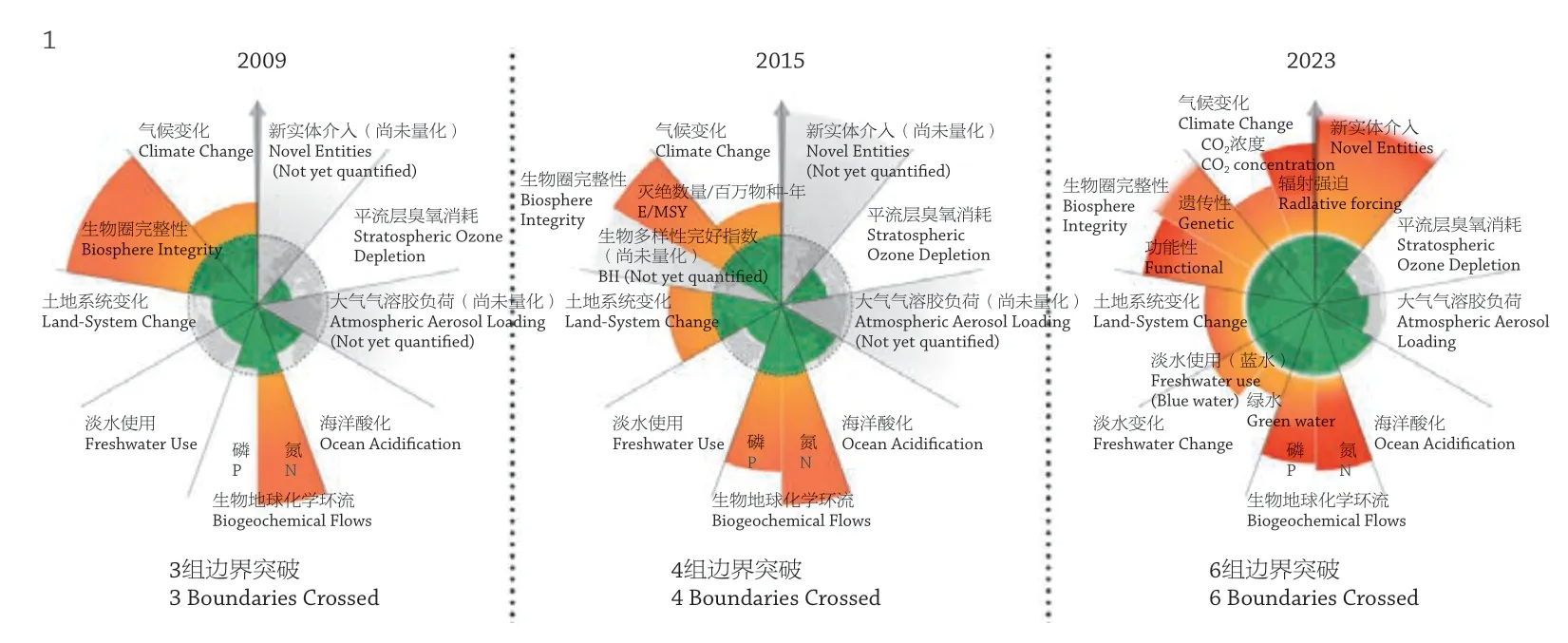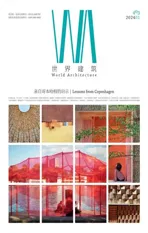何谓绝对可持续性?
2024-01-27安妮贝姆
安妮·贝姆
“绝对可持续性”的概念最近才由丹麦的环境科学家们明确定义,因此在国际学术界、公共机构和政策层面的同行中它可能还并不被熟知1)。当人们初次接触这一概念时,可能会觉得它对可持续性的理解带有简单教条或激进的倾向。恰恰相反,“绝对可持续性”是一个建立在气候和环境科学领域的理论之上的系统性综合概念,它涉及到“地球边界”这个描述地球所能承受的人类活动影响之极限的理论框架2)。
“地球边界”为地球界定了9 个生态边界,提供了一系列方法衡量人类的生产和活动对气候和环境的影响,以及大自然承载能力的极限是多少。换句话说,对地球上的每个人而言,都存在一个边界,它决定了一个人在食物、住房、交通、娱乐等方面消耗地球资源的上限。从这个意义上讲,用于界定地球边界的各种因素及它们之间的联系,与联合国可持续发展目标的整体理念是息息相关的,二者都涉及到如何应对多种全球性挑战(图1)[1-3]。

1 地球边界框架,来源:由Azote创意机构为斯德哥尔摩大学斯德哥尔摩韧性中心绘制,基于参考文献[1-3] Planetary boundaries,Credit: Azote for Stockholm Resilience Centre,Stockholm University.Based on References [1-3]
目前,丹麦技术大学绝对可持续性研究中心的学者正在研究如何在不对气候和环境造成较大影响的情况下,计算人类对地球资源的消耗量[4]。但是,绝对可持续性的定义明确后,它将对建筑和施工造成哪些影响,仍是一个微妙的问题,因为根据地球边界的理念来建造,将涉及到对建成环境的创造、维护和改进等多方面的实践和文化需要做出改变。
丹麦皇家建筑艺术学院工业化建筑中心从2017 年起一直进行相关实验,基于绝对可持续性原则、以真实尺度来测试建筑材料和施工过程。这些真实尺度的建造实验,旨在以少量材料和材料碎片来实现碳中和。此外,可拆卸设计等材料也是一项主要的设计标准。
在一个研究项目中,我们开发了一套基于粘土、木材和秸秆的“绝对可持续的建造方式”。在这一目标下,减少材料消耗、增加回收和再利用是评估建筑对环境影响的核心要素。我们的建造实践基于以下原则:
-优先使用可再生的生物基材料,而不是稀有材料、矿物材料及不可再生的材料和资源;
-使用绿色能源,减少CO2排放;
-确保资源不会被浪费,而是可以被纳入新的技术和生物循环(以实现再利用和再循环);
-避免建筑材料、建筑物和施工过程产生对环境有害的物质;
-将社会、环境和文化因素与建造结合,这些因素在建筑行业的绿色转型中无疑与经济和技术因素同等重要。
我们在这个研究项目中学到的经验是,按照循环原则和绝对可持续原则进行建造,意味着我们对材料、对建造方式,以及对房屋的供给、生命周期和回收再利用,都必须拥有与目前完全不同的思考方式。
The concept of absolute sustainability is recently defined amongst researchers in environmental science in Denmark and may not be widely known yet amongst international peers in academia,public authorities or at policy level1).Also,when first being presented to the concept one may think it alludes to a simple dogmatic or radical understanding of sustainability.On the contrary,it is a systemic integrating concept based on theories linked to the fields of climate and environmental science that refer to the concept of Planetary Boundaries,which is a framework to describe limits to the impacts of human activities on the Earth system2).
The concept of planetary boundaries defines a set of nine planetary boundaries.It includes a series of methodologies measuring nature's tolerance limits of how much we can allow our products and actions to impact the climate and the environment.In other words,each individual on Earth has a scope for manoeuvre that defines how much that individual can afford to consume the planet's resources on food,shelter,transport,entertainment,etc.In that sense,the spectrum of dimensions involved and their connectivity which define the planetary boundaries links well to the overall idea of the UN SDG's that also refer to diverse global challenges (Fig.1)[1-3].
At the centre of Absolute Sustainability at DTU (The Danish Technical University) researchers are presently working on how to calculate consumption without it putting a critical strain on the climate and the environment[4].But examining the implications of defining absolute sustainability in regard of construction and architecture is a delicate matter,since the idea of acting according to the planetary boundaries also interfere with the practices and cultures linked to creating,maintaining,and facilitating our built environment.
In CINARK -Centre for Industrialised Architecture at the Royal Danish Academy,we have,since 2017,experimented with testing materials and constructions in full-scale that are based absolutely sustainable principles.The full-sale construction experiments are meant to be CO2neutral,based on few materials and pure material fractions.Also,design for disassembly (DfD) have been applied as primary design criteria.
So,for one research project we developed "absolutely sustainable constructions" based on Clay,Wood and Straw.In this case reduction of material consumption,recycling,and reuse were at the centre of assessing the environmental impact up against the architectural outcome.In sum,it pointed to construction practices based on the following principles:
-prioritise renewable,bio-based materials over rare,mineral,and non-renewable materials and resources.
-use of green energy sources to reduce CO2emissions.
-ensure that resources are not wasted but can be included in new technological and biological circuits (reuse and recycling).
-avoid environmentally harmful substances in materials,constructions,and construction processes.
-incorporate the social,contextual,and cultural dimensions,which are undoubtedly of equally great importance as economic and technical aspects in the green transition of the building industry.
Lessons learned were that building with circular principles coupled with absolute sustainability implies that we must think of materials,constructions,and buildings' provision,life,and their afterlife fundamentally different than we do today.
